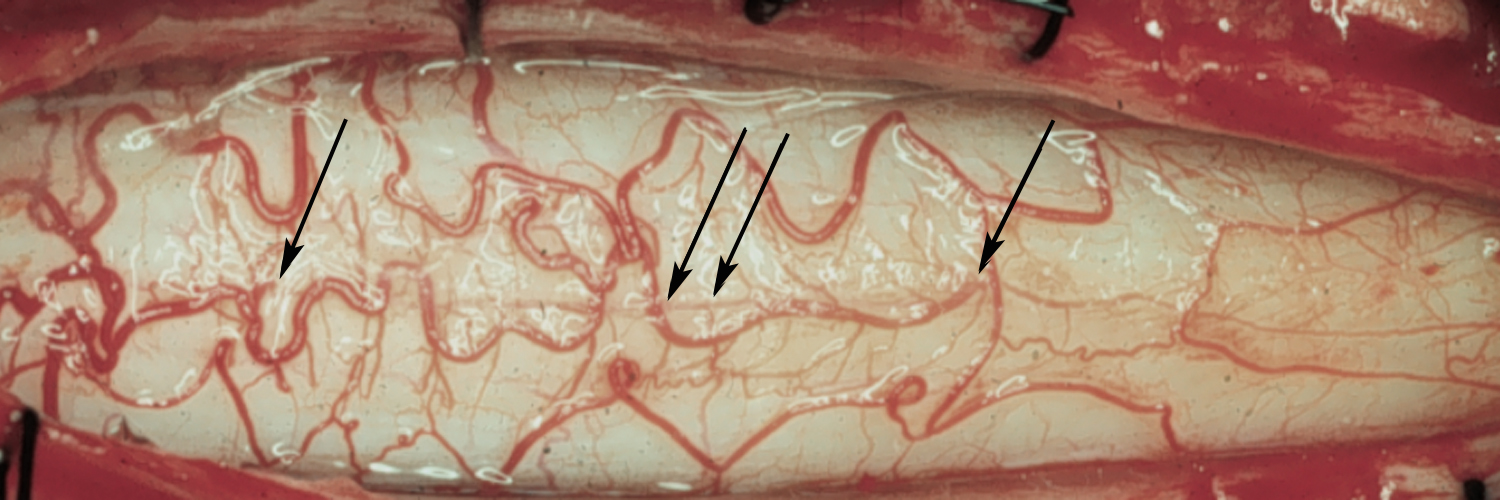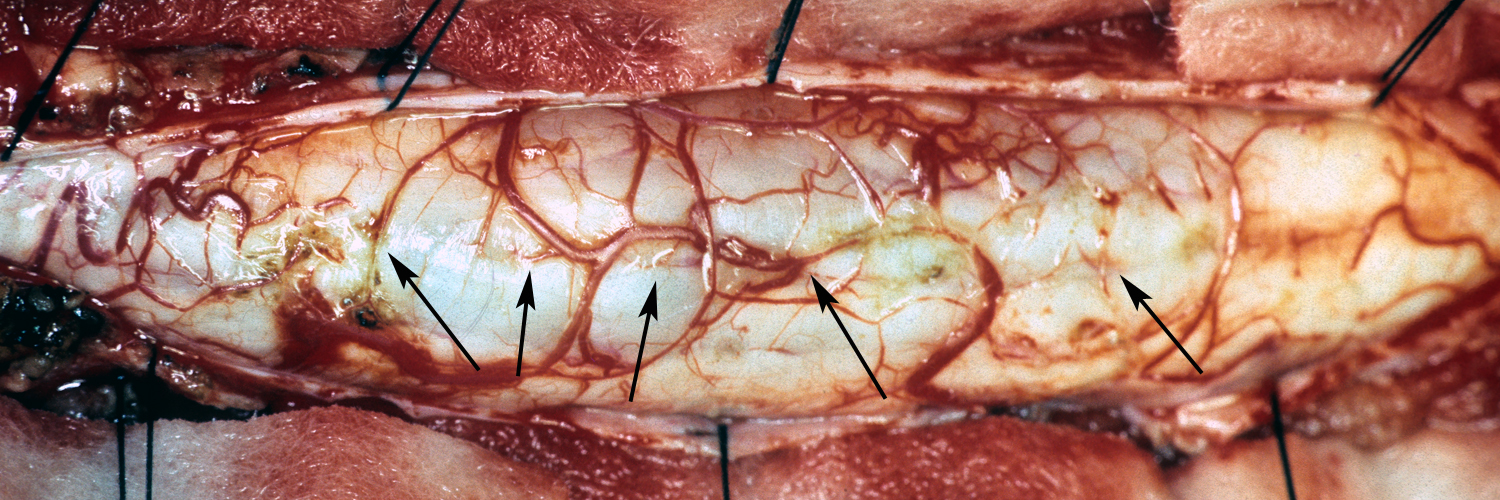Identifying the median raphe

Pial vessels penetrating median raphe: The arrows point to small pial vessels that disappear as they turn ventral to penetrate the median raphe.

Pial vessels penetrating median raphe: Another exam of vessels on dorsal surface of cord disappearing as they turn ventral to penetrate the median raphe.
Opening median raphe
After the median raphe is located, the pia overlying it is cut using a scalpel or Beaver blade. Small bands of pia bridging the raphe are sharply divided as shown here to open the raphe. This is done for the entire length of the tumor.
Cauterizing pial vessels
Vessels crossing the median raphe are cauterized using a contact Nd/YAG laser as shown here. The thermal injury is minimal when this laser is set for a 4-watt output.
Spreading median raphe open
The median raphe is gently spread open with the plated bayonet, an instrument developed by Dr. Fred Epstein. Note the vertically oriented vessels lining the wall of the median raphe. They can be used as markers of the raphe.
Debulking the tumor
After biopsy confirmation, an astrocytoma is debulked starting in its dorsal midline and moving toward the tumor’s center. The resection continues then from the center to the tumor’s margins. Shown here is the ultrasonic aspriator being used to remove tumor tissue.
Completion of the resection
Intramedullary astrocytomas are infiltrative, so I do not attempt to remove the whole tumor. Rather, work continues until either potentials warn of an impending injury or the consistency of the tumor starts to change toward normal. The goal is an 80%+ resection.
Hemostasis
Hemostasis is best accomplished using a hemostatic sponge for tamponade as shown here. Cautery is used only as a last resort as it typically results in injury to the cord of a degree that results in functional loss.
Please create a free account or log in to read 'Resection of an Intramedullary Spinal Cord Astrocytoma – Rick Abbott, M.D.'
Registration is free, quick and easy. Register and complete your profile and get access to the following:
- Full unrestricted access to The ISPN Guide
- Download pages as PDFs for offline viewing
- Create and manage page bookmarks
- Access to new and improved on-page references


